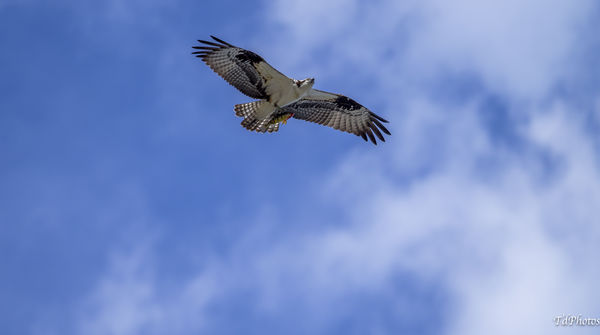Check out AI Artistry and Creation section of our forum.
The Quest for the Perfect Shutter
Mar 2, 2019 18:01:44 #
BebuLamar wrote:
I actually hoped that the Nikon Z cameras don't have the mechanical shutter but they do. If Nikon could pull it off they could surpass Sony but obviously they couldn't. I thought the Z stands for Zero shutter.
And here I thought it stood for Zebra, Bebu ….

Mar 2, 2019 19:03:34 #
BebuLamar wrote:
The FM2 and FE2 had titanium vertical traveled shutter. I am not sure about the FM2n. The F5 has carbon fiber and aluminum shutter.
At some point, the FM2n shutters were converted to aluminum, from the original titanium. I don't know the exact year, but I've seen FM2n's with both. I've yet to see a serial number for the changeover. Most likely the titanium shutters were used to exhaust.
Mar 2, 2019 20:23:40 #
Timmers
Loc: San Antonio Texas.
Chris T wrote:
Do you remember the Titanium bladed shutter Nikon ... (show quote)
The titanium shutter bladed shutter had one huge advantage, war correspondents had a shutter curt an that did not rot out in the Viet Nam jungles. BUT, neither did the rubberized shutter curtains in Leica cameras. But as always you are asking the wrong questions. Is there a shutter that is the ideal shutter design for a focal plane shutter? The answer is yes there is. The design was first introduced in 1929, then it was perfected in early 1932 when it went into production in all Leica cameras.
Yes, you should shake your head, this is pretty pathetic. When in 1969 I visited the factory in Wetzlar I asked a stupidly simple question to the presenters, "Does Leica make the best lenses of all camera makers?" I received a smile and was told that Nikon made some superior optics, better than Leitz. Then came the great truth, "If you want the results these lenses are capable of you need to put them on a Leica camera body to get the best results. Their camera bodies are well made but the first shutter curtain slams into the shutter stop creating vibrations that remove the quality of the image."
So the answer to your question is to do what E. Leitz does, look at the total camera then determine if the WHOLE camera system is providing excellence in your images.
Check out Video for DSLR and Point and Shoot Cameras section of our forum.
Mar 2, 2019 20:56:49 #
Timmers wrote:
The titanium shutter bladed shutter had one huge a... (show quote)
Timmers - your quote here, is kinda vague ... which body has the shutter curtain banging into the stop?
"If you want the results these lenses are capable of you need to put them on a Leica camera body to get the best results. Their camera bodies are well made but the first shutter curtain slams into the shutter stop creating vibrations that remove the quality of the image."
Does that refer to Leica, or Nikon?
Mar 2, 2019 21:30:59 #
JimH123 wrote:
A zillion focal points won't solve the global shut... (show quote)
So, you reckon the a9 has about as perfect a shutter as it's gonna get, right now, is that it, Jim?
Mar 2, 2019 22:17:06 #
Chris T wrote:
It doesn't, huh, Tom … not like the one employed by Olympus, in their new E-M1X and in the E-M1 II ???
So, then - the Sony a9 has a better employment of the electronic shutter than Olympus's more recent effort?

So, then - the Sony a9 has a better employment of the electronic shutter than Olympus's more recent effort?

I’m not sure about the em1x, haven’t read anything about the electronic shutter yet. It will be interesting to see how it will perform, since this camera supposed to be a sport camera.
On the other hand you can still use the electronic shutter for moving subjects, but you will have issues with humming birds. 😂
Mar 2, 2019 23:18:40 #
Timmers
Loc: San Antonio Texas.
Chris T wrote:
Timmers - your quote here, is kinda vague ... which body has the shutter curtain banging into the stop?
"If you want the results these lenses are capable of you need to put them on a Leica camera body to get the best results. Their camera bodies are well made but the first shutter curtain slams into the shutter stop creating vibrations that remove the quality of the image."
Does that refer to Leica, or Nikon?
"If you want the results these lenses are capable of you need to put them on a Leica camera body to get the best results. Their camera bodies are well made but the first shutter curtain slams into the shutter stop creating vibrations that remove the quality of the image."
Does that refer to Leica, or Nikon?
ALL Leica camera bodies from 1932 on have the curtain arrested by a device much like the throw out bearings that adjust the brake system in modern vehicles (similar design, not the same). In a Leica camera body the first curtain does NOT stop, rather it winds around the drum to arrest the motion of that shutter, then reverses to wind back to the rest position. That first curtain can be herd doing this if one listens careful to the back of the camera, the sound is a swishing sound like ball bearings sliding along a trough.
Other cameras with focal plane shutters stop the first curtain abruptly. This is where the great amount of vibration is created causing loos of fine sharpness.
This is not a far fetched idea, the German engineers realized that the main problem was in the first curtain's sudden stopping and so solved the problem with a wind up curtain.
Check out Drone Video and Photography Forum section of our forum.
Mar 2, 2019 23:28:02 #
tdekany wrote:
I’m not sure about the em1x, haven’t read anything about the electronic shutter yet. It will be interesting to see how it will perform, since this camera supposed to be a sport camera.
On the other hand you can still use the electronic shutter for moving subjects, but you will have issues with humming birds. 😂
On the other hand you can still use the electronic shutter for moving subjects, but you will have issues with humming birds. 😂
These aren't humming birds, though, Tom …
Thought you were showing the problem here, but I guess not ….
Nice shots, though …. btw … I have a Topic Post on the E-M1X - maybe you missed it …
Mar 2, 2019 23:39:59 #
Timmers wrote:
ALL Leica camera bodies from 1932 on have the curt... (show quote)
I see, Timmers - thanks for the explanation. So, Leica bodies use a perfect shutter design, whilst all others - are missing the boat, eh? … But, if one uses some Nikkor glass, on a Leica, you're there, huh?
Mar 3, 2019 00:02:54 #
Bipod wrote:
...............
Therefore, I would like to see R&D
concentrated on development of a
solid-state focal plane shutter.
.........
Therefore, I would like to see R&D
concentrated on development of a
solid-state focal plane shutter.
.........
I have such shutters in most
of my cameras. They are not
flawless. So yes, R&D in that
area would be welcome. But
they do serve me well enuf,
for my specific need, at their
current level of development.
Don't press me to "define my
terms", cuz any genius such
as yourself can figger it out.
.
Mar 3, 2019 00:35:32 #
Timmers wrote:
ALL Leica camera bodies from 1932 on have the curt... (show quote)
Never heard of a throw out bearing having anything to do with brakes. Can you point me to something on the subject? My searches on throw out bearings came up, as I expected, all pertaining to clutches. But there is nothing modern about that.
--
Check out Panorama section of our forum.
Mar 3, 2019 04:57:48 #
Bill_de wrote:
Never heard of a throw out bearing having anything
to do with brakes. Can you point me to something on
the subject? My searches on throw out bearings came
up, as I expected, all pertaining to clutches. But there
is nothing modern about that.
--
Never heard of a throw out bearing having anything
to do with brakes. Can you point me to something on
the subject? My searches on throw out bearings came
up, as I expected, all pertaining to clutches. But there
is nothing modern about that.
--
I also found his terminology odd. But I
didn't find it obscured the general idea
of his post. Whatever the fine details
are about vibration damping on Leica
curtain shutters may be, I can readily
accept that he does a lame job trying
to explain it ... but the shutters work
very well nonetheless !
OTOH there has been some grumbling
about shutter shock in certain models
from time to time. It may be a quite
real phenomenon, but its effect on the
image has only been documented by
the usual suspects, those who use lab
testing to uncover "problems" that we
never see evidenced in our real world
imaging work.
An example ... IIRC ... was lab testing
revealing shutter shock had detectable
negative effect on sharpness at speeds
in the 1/6 to 1/30 range on a camera
that I use at those speeds. I wondered
... for a few moments ... why didn't I
have that problem. And then it hit me:
Why would anyone use the mechanical
shutter in that speed range anywho ?!?
I know I surely did NOT :-)
Q: How many geeks can dance
on the head of a pin ?
A: None. Geeks gots no riddim.
But they do have lab tests that
prove that dancing on the head
of a pin contributes to inferior
results of something or other !
.
Mar 3, 2019 19:32:24 #
Chris T wrote:
Exactly, Bebu … why have two shutters, if the second one's not necessary, because the first is perfect?
All is not right, on this front - that's for sure!!!!
All is not right, on this front - that's for sure!!!!
There aren't any "perfect" components in electronics or optics.
Resistors create Johnson noise and an empty ring creates diffraction.
Engineering is always a matter of picking the part(s) that are will
perform best in the particular application.
Mar 3, 2019 19:39:34 #
Architect1776 wrote:

The OP's perfect titanium shutter is a rolling shutter.
Leaf shutters pretty much eliminate this problem and are close to global.
But they like the current electronic sensor global are still quite limited.
As you say it will be there one of these years.


The OP's perfect titanium shutter is a rolling shutter.
Leaf shutters pretty much eliminate this problem and are close to global.
But they like the current electronic sensor global are still quite limited.
As you say it will be there one of these years.
Leaf shutters get expensive in an interchangable lens camera,
since there has to be one in every lens. And it's unlikely that
all the calibrations will match. So when you change lenes,
you also change how long a shutter setting of "100" actually is.
What do you mean by "electronic shutter"?
Yes, current "global shutter" sensors have many limitations: size, cost,
lower resolution, higher heat.
Someday we may all fly in supersonic transports...or not.
The fastest airplane in 1964 was the Lockheed SR-71.
It is still the fastest airplane today--only it's in mothballs.
Someday there may be a colony on Mars...or not.
To advance, all technology requires is an unlimited supply of money.
Mar 4, 2019 01:39:28 #
If you want to reply, then register here. Registration is free and your account is created instantly, so you can post right away.
Check out Printers and Color Printing Forum section of our forum.





